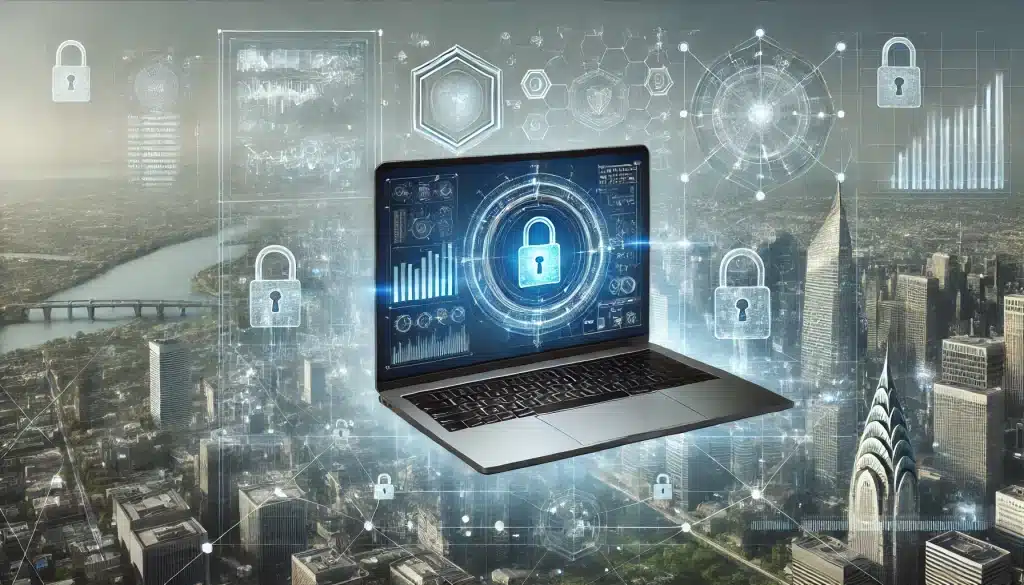Future Trends in Cyber Security
As the digital landscape continues to evolve, so do the threats and challenges cybersecurity professionals face. Staying ahead of these trends is crucial for maintaining robust security measures and protecting sensitive data. In the final chapter of our eBook, “Starting Your Cyber Security Career: Building a Successful Career in Cyber Security,” we explore the future trends in cyber security that are set to shape the industry. Let’s dive into the emerging technologies and practices that will define the future of cyber security.
The Rise of Artificial Intelligence and Machine Learning
1. AI and ML in Threat Detection
Artificial intelligence (AI) and machine learning (ML) revolutionize how cyber threats are detected and mitigated. These technologies can analyze vast amounts of data to identify patterns and anomalies that may indicate a security breach.
- Benefits:
- Enhanced threat detection and response times
- Reduction in false positives
- Proactive threat hunting
2. Automation of Security Processes
AI and ML can automate routine security tasks, allowing cybersecurity professionals to focus on more complex issues. Automation can streamline incident response, vulnerability management, and compliance monitoring.
- Benefits:
- Increased efficiency and productivity
- Consistent and accurate execution of security tasks
- Reduction in human error
The Growing Importance of Zero Trust Architecture
1. Zero Trust Principles
Zero Trust is a security model that assumes all users, devices, and applications are untrusted by default. This approach requires strict verification for every access request, regardless of origin.
- Key Principles:
- Verify explicitly
- Use the least privilege access
- Assume breach
2. Implementation of Zero Trust
Implementing Zero Trust involves segmenting networks, enforcing strict access controls, and continuously monitoring all activity. This approach minimizes the attack surface and limits the impact of potential breaches.
- Benefits:
- Enhanced security posture
- Reduced risk of lateral movement by attackers
- Improved visibility and control
The Evolution of Cloud Security
1. Securing Multi-Cloud Environments
As organizations increasingly adopt multi-cloud strategies, securing these environments becomes more complex. Cloud security solutions must address the unique challenges of different cloud providers and services.
- Focus Areas:
- Identity and access management (IAM)
- Data protection and encryption
- Compliance and governance
2. Cloud-Native Security Tools
Cloud-native security tools are designed to operate seamlessly within cloud environments. They offer scalable and flexible security solutions that can adapt to the cloud’s dynamic nature.
- Examples:
- Cloud Security Posture Management (CSPM)
- Cloud Workload Protection Platforms (CWPP)
- Serverless security solutions
The Proliferation of Internet of Things (IoT) Devices
1. IoT Security Challenges
The rapid growth of IoT devices presents significant security challenges. These devices often lack robust security features and can be easily compromised, making them attractive targets for attackers.
- Key Challenges:
- Lack of standardized security protocols
- Limited processing power for security features
- Widespread deployment and connectivity
2. Strategies for Securing IoT
Securing IoT devices requires a multi-faceted approach, including authentication, encryption, and continuous monitoring. Implementing security measures at both the device and network levels is essential.
- Best Practices:
- Use strong, unique passwords
- Regularly update firmware and software
- Implement network segmentation
The Integration of Cyber Security and Privacy
1. Privacy-First Approach
As data privacy regulations become more stringent, integrating privacy into cyber security practices is increasingly important. A privacy-first approach ensures data protection measures comply with legal requirements and build customer trust.
- Key ConsiderationTrustta minimization and anonymization
- Transparent data handling practices
- Compliance with regulations like GDPR and CCPA
2. Privacy-Enhancing Technologies
Privacy-enhancing technologies (PETs) help organizations protect sensitive data while maintaining functionality. PETs include techniques like differential privacy, homomorphic encryption, and secure multi-party computation.
- Benefits:
- Enhanced data protection
- Compliance with privacy regulations
- Increased customer trust
The Growing Need for Cyber Security Talent
1. Addressing the Skills Gap
The demand for skilled cyber security professionals continues to outpace supply. Addressing the skills gap requires investment in education, training, and professional development.
- Strategies:
- Promote STEM education and cyber security awareness
- Offer internships and apprenticeships
- Support continuous learning and certification programs
2. Emphasizing Diversity and Inclusion
Diversity and inclusion in the cyber security workforce bring varied perspectives and innovative solutions to complex problems. Encouraging underrepresented groups to pursue careers in cybersecurity can help bridge the talent gap.
- Benefits:
- Enhanced problem-solving and creativity
- A broader range of skills and experiences
- Improved team performance and innovation
Conclusion
Emerging technologies, evolving threats, and the ongoing need for skilled professionals shape the future of cyber security. By staying informed about these trends and adapting to them, you can build a resilient and successful career in this dynamic field.
For more detailed insights and guidance, download our free eBook, “Starting Your Cyber Security Career: Building a Successful Career in Cyber Security,” at https://lufsec.com/cyber-security-career-ebook. Thank you for following our series, and we hope it has provided valuable information to help you on your journey in the cybersecurity industry.

